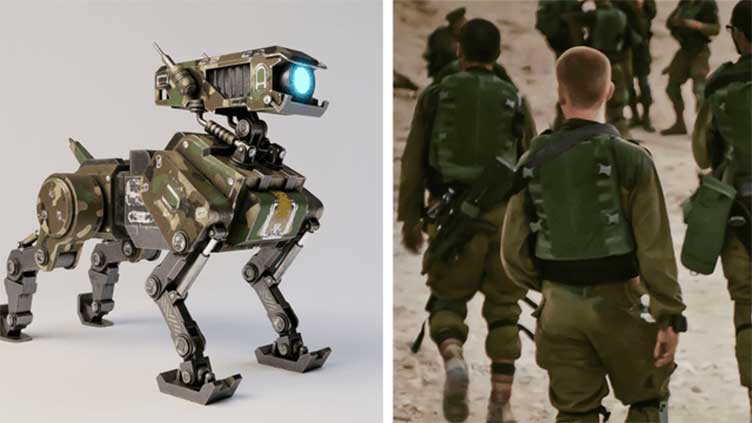Robot dogs to enter active war, help frontline troops in high-risk missions

Technology
Robot dogs could soon relieve Ukrainian soldiers on the front lines
(Web Desk) - Robot dogs could soon replace soldiers on Ukraine’s front lines, taking on dangerous missions like spying on Russian trenches or detecting mines.
Robot dogs have also been tested by the US Army as part of its efforts to integrate this technology for more effective and lethal military formations.
The Army has been exploring advanced equipment, including an AI-controlled, rifle-holding robot dog, to develop solutions for neutralizing intruder drones.
An exercise focused on this was conducted at the beginning of August at Fort Drum, New York, during Operation Hard Kill, establishing the location as a leading Unmanned Aerial Systems (UAS) defeat training facility.
The robot dogs that have been tested were focused on various applications, including rifle-armed versions like the Ghost Robotics Vision 60 for counter-drone roles, while Marine Commandos used them with rifles and conventional Marines trialed others with anti-armor rockets. Unarmed models are also deployed for base perimeter patrols.
During a demonstration in an undisclosed location, the “BAD One” model showcased its agility, responding to commands by standing, crouching, running, and jumping, AFP reported.
These robotic helpers could soon be a game-changer for Ukraine’s army, which is grappling with manpower shortages, according to their creators.
Skimming low and nearly undetectable, the advanced machines use thermal imaging to scout enemy trenches and buildings in combat zones.
According to Yuri, a British military equipment operator, traditional reconnaissance missions often involve trained military staff that faces significant risks.
“We have surveillance soldiers who get sent on reconnaissance missions (who) are most of the time very highly trained people, very experienced people (and) always exposed to risks,” Yuri noted.
He also highlighted that the robotic helper reduces these risks and boosts operational capabilities, which is its primary function.
The demonstration device has a battery life of about two hours. It’s designed to detect mines and improvised explosive devices and can also carry up to 7 kilograms (15 pounds) of ammunition or medicine to critical areas on the battlefield.
Yuri mentioned that while he can’t disclose the exact number deployed in Ukraine, he believes their use will significantly impact operations and enhance soldier safety.
Should the robot dogs fall into Russian hands, an emergency switch allows the operator to erase all their data, ensuring that sensitive information remains secure, he added.
The robot dogs have been supplied to Ukraine by an unnamed British company, and although a more advanced model, “BAD Two,” exists, it was not showcased during the demonstration for security reasons.


